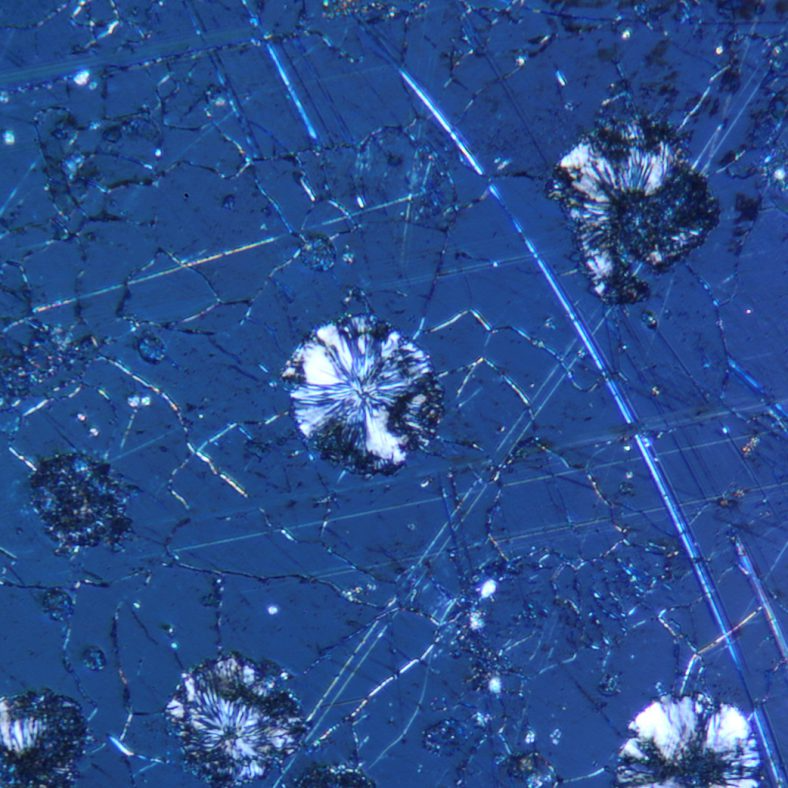Optika B-510METR Trinocular Metallurgical Microscope, 500x, IOS PLAN MET
Observation mode: Brightfield, simple polarized light, oblique illumination on incident light.
Epi-illumination and filters: X-LED8 with white 8 W LED (6.300 K) with brightness control. With aperture and field diaphragms, and oblique illumination system. With polarizer and analyzer. Multi-plug 100-240Vac/6Vdc external power supply.
Head: Trinocular (fixed 50/50), 30° inclined, 360° rotating.
Interpupillary distance: Adjustable between 50 and 75 mm.
Dioptric adjustment: On the left eyepiece tube.
Eyepieces: WF10x/22 mm, high eye-point and with rubber cups.
Nosepiece: Quintuple revolving nosepiece, rotation on ball bearings.
Objectives (strain-free):
– IOS W-PLAN MET 5x/0.12
– IOS W-PLAN MET 10x/0.25
– IOS W-PLAN MET 20x/0.40
– IOS W-PLAN MET 50x/0.75
All with anti-fungus treatment.
Specimen stage: Double layer rackless mechanical stage, 233×147 mm, 78×54 mm X-Y range.
Focusing: Coaxial coarse (adjustable tension) and fine focusing mechanism with limit stop to prevent the contact between objective and specimen.
MET Series
Metallography is the study of the physical structure and components of metals, by using microscopy. Many different microscopy techniques are used in metallographic analysis. Prepared specimens should be examined with the unaided eye after etching to detect any visible areas that have responded to the etchant differently from the norm as a guide to where microscopical examination should be employed. Light optical microscopy (LOM) examination should always be performed prior to any electron metallographic (EM) technique, as these are more time-consuming to perform and the instruments are much more expensive.
Further, certain features can be best observed with the LOM, e.g., the natural color of a constituent can be seen with the LOM but not with EM systems. Also, image contrast of icrostructures at relatively low magnifications, e.g.,
MATERIAL SCIENCE / METALLOGRAPHY
Reflected light microscopy is the method for observation of specimens that remain opaque even when ground to a thickness of few microns. The range of specimens falling into this category is incredibly wide and includes most metals, ores, ceramics, many polymers, semiconductors (unprocessed silicon, wafers, and integrated circuits), coal, plastics, paint, paper, wood, leather, glass inclusions, and a wide variety of specific materials.






















